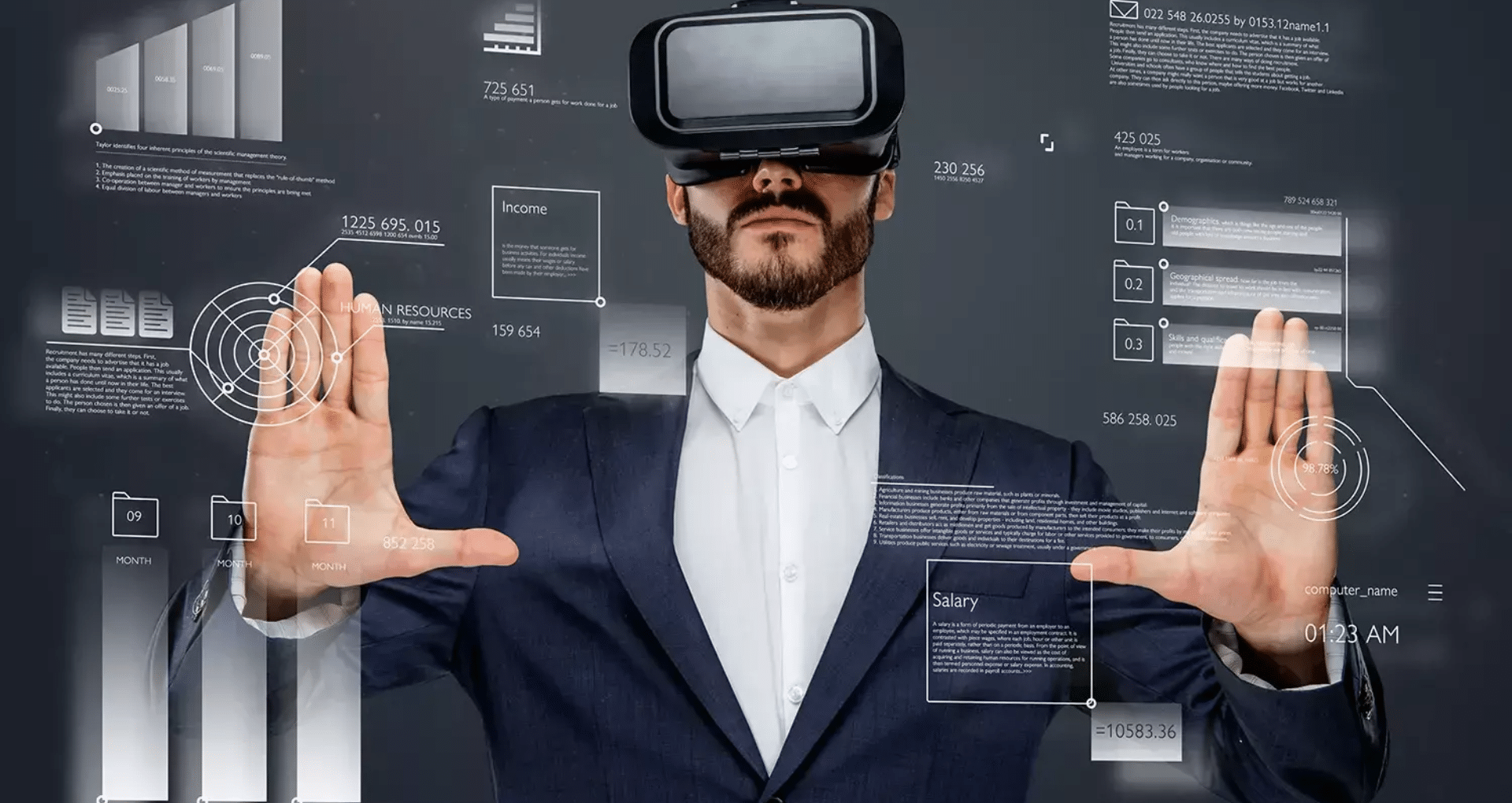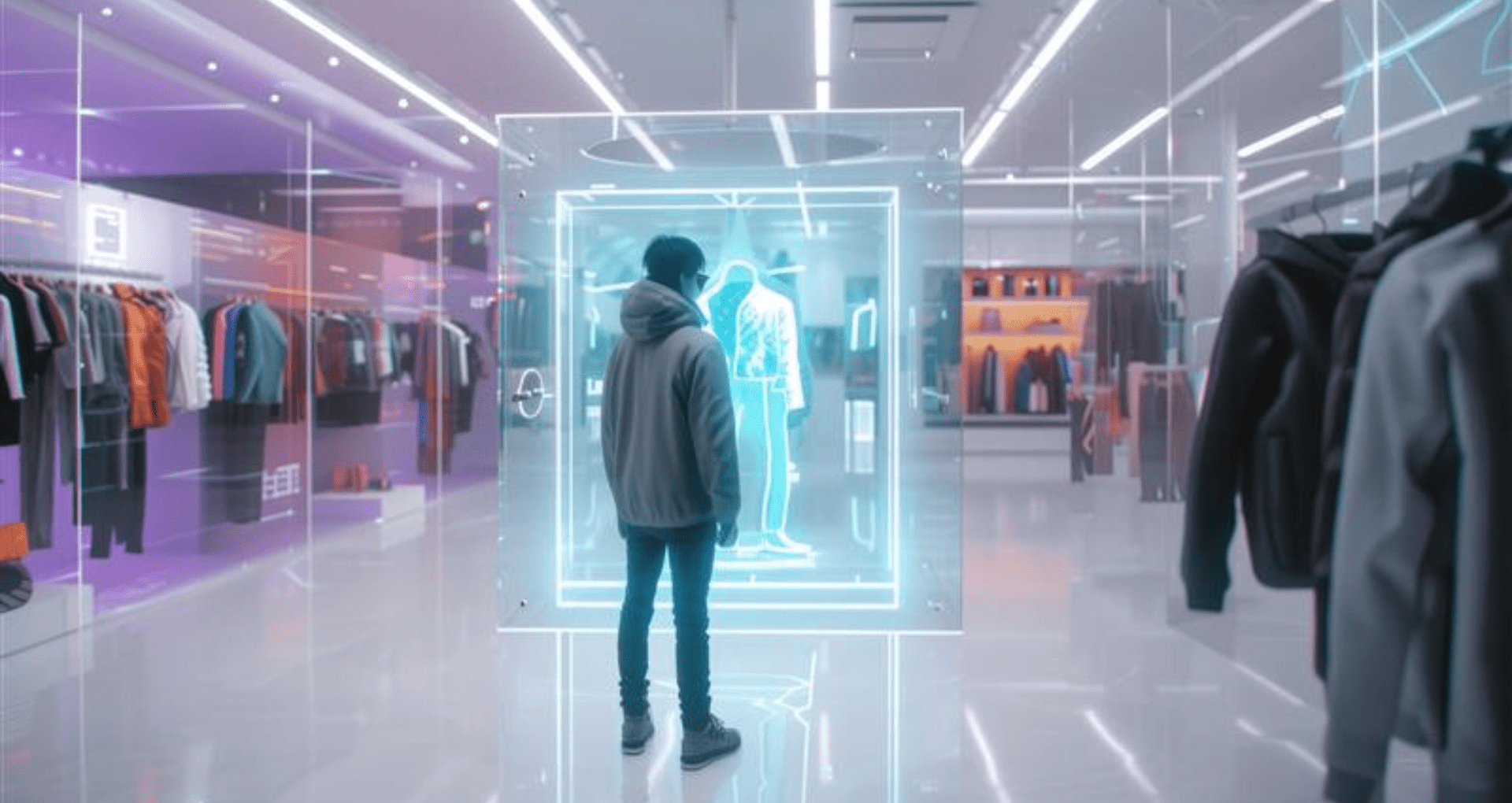The digital age is all about experience. And with technologies like Extended Reality (XR), creating “immersive” experiences is slowly becoming the norm. While a completely digital world like Metaverse is still a few years away, XR has found many use cases across various domains over the past few years – from virtual collaboration to customer engagement and even product launches. For instance, the rise of passthrough Augmented Reality (AR) integrated with Virtual Reality (VR), as seen in products like Meta Quest 3, Meta Quest Pro, and Apple’s Vision Pro, showcased the significant evolution of the technology. Such applications hint towards a consistent progression towards widespread adoption in the future. In fact, during Q1 2023, the Meta headset emerged as one of the best-selling global XR headset brands, with projections indicating its significant market dominance. The Meta series, collectively, surpassed a remarkable milestone by shipping over 20 million units as of Q1 2023.
But what does this mean for businesses? How can they capitalize on this trend and gain a competitive edge in the coming year? In this blog, we dive deep into the convergence of extended reality and business solutions, the top use cases of XR in 2023, the most anticipated extended reality trends of 2024, and the key challenges that come with the adoption of the technology.
How extended reality is converging into business solutions
It’s no news that XR is slowly converging into various facets of business, offering innovative solutions that not only improve operational efficiency but also elevate the overall user experience for employees, customers, and stakeholders alike. Here are four characteristics that make this convergence notably evident:
- Training and Development: Corporate training that employs augmented reality product visualization creates truly immersive learning experiences that yield significant results for on-the-job guidance and virtual environments for hands-on experience.
- Remote Collaboration: Extended reality empowers employees to collaborate with other team members in a remote setting by immersing themselves in a virtual environment. One example is the software company “The Wild.” It established a VR-based digital workspace for building industry teams to explore and interact with 3D designs, replacing traditional two-dimensional slides. This shared VR space enables seamless collaboration, allowing employees, clients, and distributed teams to work together as if in the same room.
- Design and Prototyping: The utilization of extended reality significantly accelerates the product design process, particularly when it comes to developing new products. Developers are increasingly leveraging VR to create a 3D preview of product designs, thereby enhancing their understanding of the product’s appearance and functionality before moving on to the production stage. Leading car manufacturers like BMW and Land Rover are some of the best examples of companies that embrace extended reality in their design and development phases.
- Data visualization: Many businesses are using extended reality for financial services to visualize complex data sets in three-dimensional space. With XR, data analysts interact with data in a more intuitive and immersive manner, leading to better insights and decision-making.
The top 3 domains where extended reality made significant progress in 2023
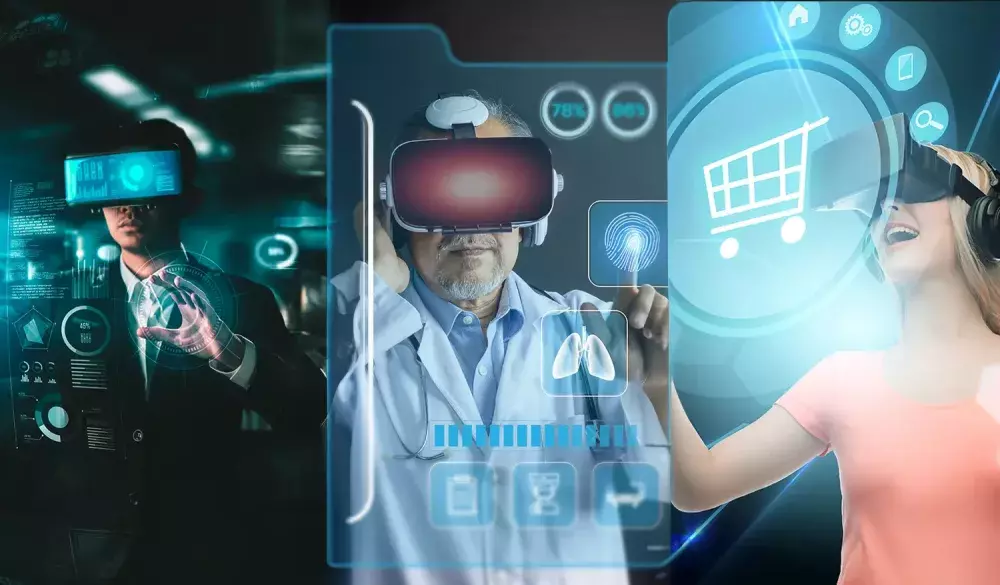
Whether employing virtual, augmented, or mixed reality elements, extended reality holds considerable potential for elevating capabilities within these sectors and beyond.
Healthcare:
XR is advancing significantly in the healthcare sector by providing immersive experiences to both patients and physicians. For instance, Stanford Medicine uses extended reality software to integrate images from MRIs, CT scans, and angiograms, forming a three-dimensional model that allows physicians and patients to visualize and engage with the medical data. Beyond patient care, XR healthcare innovations were also pivotal in surgical training and medical education, thereby enhancing the learning experience for doctors and students.
Manufacturing:
VR solutions offer manufacturers a safer and more cost-effective means of exploring early concepts of design by eliminating the need for full-scale prototypes. XR in manufacturing processes plays a multifaceted role, enhancing training, design procedures, maintenance efficiency, collaboration, quality control, assembly line optimization, remote assistance, and safety training. One such example is Airbus, which leverages simulated digital environments for the design and testing of new aircraft features and models.
Retail:
An exemplary illustration of XR retail innovation is the furniture retailer IKEA, which has successfully incorporated XR technology to elevate its customers’ shopping experience. Customers can traverse over fifty furnished or unfurnished spaces via a virtual showroom, thereby acquiring an in-depth understanding of the furniture offerings. Another example is Amazon’s “View in your room” feature, which allows users to preview products in their home before purchasing, providing a convenient way to assess how products fit and look in their space.
Integrating XR offers consumers the convenience of virtually exploring an ideal house, test-driving a vehicle, or trying on clothing—all from the comfort of home. Vertebrae, for instance, allows clients to offer a virtual try-on experience using their 3D and AR technology, enabling consumers to preview products before making transactions. Another notable player in this space is VNTANA. Serving as the exclusive software platform powered by Intelligent Optimization™, VNTANA facilitates seamless viewing, management, and distribution of your extensive 3D asset library and transforms customer’s footwear sales effortlessly through the power of 3D eCommerce.
What are the top extended reality trends in 2024?
The year 2024 will prove to be pivotal for extended reality solutions, ushering in a new era of immersive and transformative experiences. Let’s take a look at the top extended reality trends that are likely to shape the technological landscape in 2024 and beyond:
Trend# 1: Immersive Retail
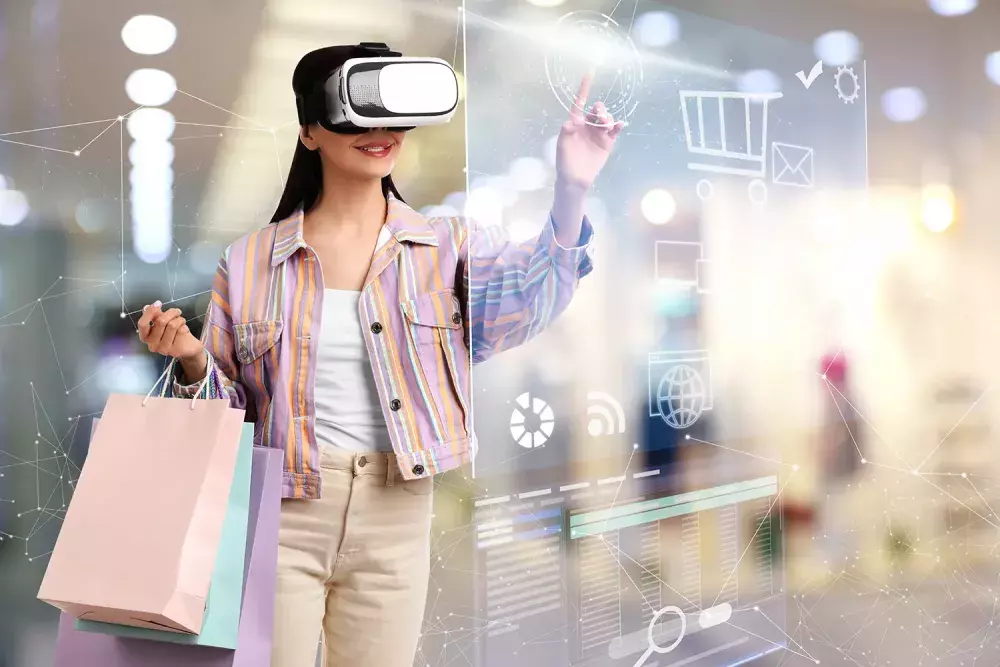
The global retail industry has undergone substantial changes in recent years, primarily due to e-commerce, which gained momentum during the COVID-19 pandemic. But despite the unparalleled convenience of online shopping, it lacks the sensory stimulation that physical stores provide. While many retail chains have begun integrating XR solutions into their stores, the year 2024 is expected to witness further penetration of this technology in global markets. “Immersive retail,” employing technologies like AR and VR, will serve as a bridge, crafting more engaging and personalized shopping experiences. This approach will normalize a “try before you buy” trend and improve in-store interactions. In fact, research indicates that 80% of consumers find the overall experience of immersive shopping appealing.
Immersive retail technology maximizes the potential of big data and AI for hyperpersonalization, tailoring displays to individual preferences. It also efficiently manages real-time inventory, provides 3D product views online, and employs social VR for shared shopping experiences, seamlessly blending the advantages of digital and physical retail.
Speaking of examples, Sephora, a leading beauty retail chain, stands out as a pioneer in AR-based virtual try-ons. Through AR, Sephora’s mobile app enables customers to virtually try different shades of makeup, offering a preview without even visiting a store. This has resulted in higher interaction rates and increased time spent on their app. Moreover, the implementation of AR try-ons has reportedly contributed to higher conversion rates for their online store, demonstrating the positive impact of immersive retail on customer engagement and sales.
Farfetch, renowned for luxury boutiques, has introduced a “Store of the Future” in its London retail space. This augmented retail solution seamlessly blends online and offline experiences, featuring connected clothing racks, touch-enhanced mirrors, and sign-in stations utilizing online data. Customers access their purchase history and wish list, providing valuable insights for sales. A smart mirror allows size requests, exploring alternatives, and payments in the dressing room. This innovation earned Farfetch the title of “The Retailer of the Future,” harmonizing boutique charm with online convenience.
Gucci and Snapchat collaboratively inaugurated a global AR shoe try-on campaign. By leveraging Snapchat’s AR platform and SnapML feature, the campaign achieved notable success. The realistic try-on experience for four unique pairs of sneakers not only captured the attention of Snapchatters but also effectively kept them engaged.
Trend#2: Immersive technology in Real-estate
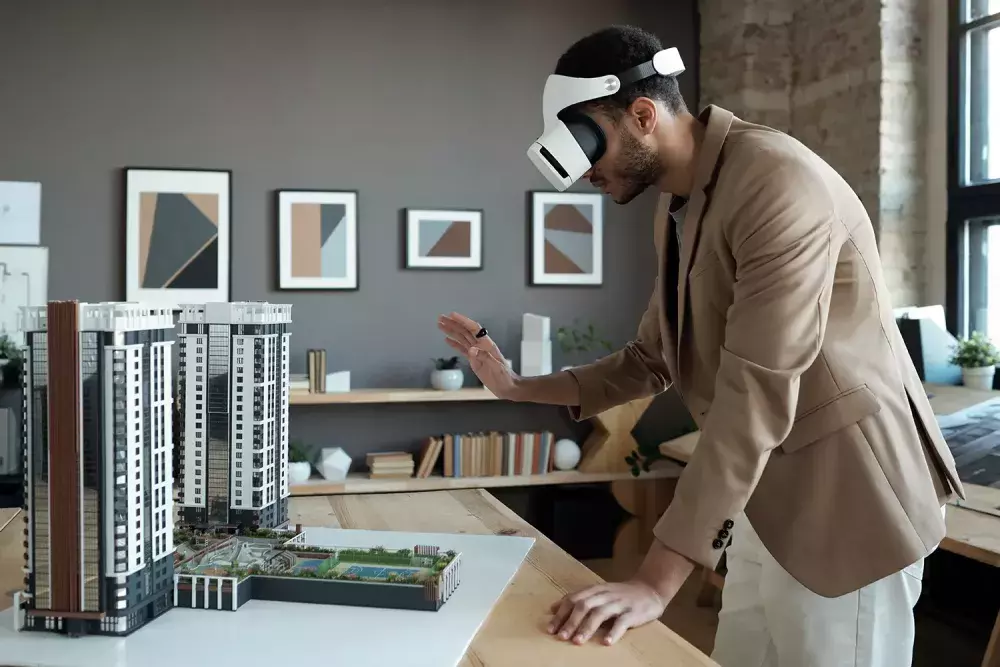
Extended Reality (XR) is on the verge of revolutionizing the real estate industry, as evident from the predicted surge of the real estate VR market to $2.6 billion by 2025. This transformative innovation facilitates virtual property tours, remote collaboration, and interactive showrooms, allowing buyers to customize and visualize spaces. XR also supports design visualization, remote property management, and augmented property information. It improves market analysis, provides valuable training tools, and facilitates remote property sales, promising to streamline processes and redefine marketing strategies.
A notable example is Inspace, an integrated property presentation platform that centralizes data, enables interactive presentations, and offers analytics. Another example is Matterport, which provides real estate professionals with 3D and VR property visits. Matterport utilizes “True 3D” technology to provide potential clients with the ability to experience immersive walkthroughs, floor plans, and accurate interior measurements.
Trend# 3: 5G Connectivity
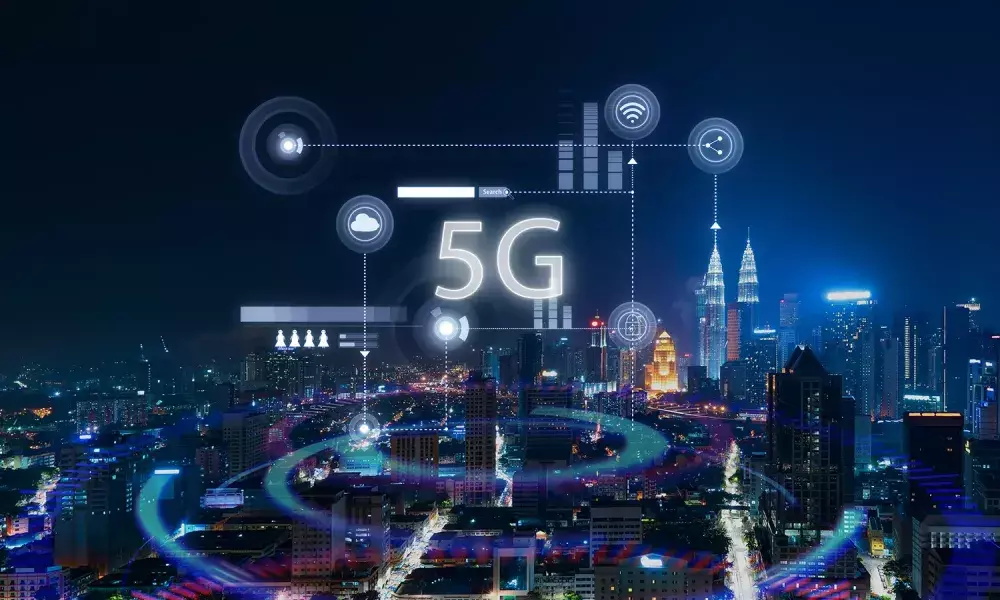
According to a report by XR Today, 5G will have a big impact on the development of extended reality because it gives users uninterrupted access to wireless content, which enhances the immersive experience overall. To use extended reality apps smoothly, large amounts of data must be sent very quickly. 5G connectivity provides speeds that are twenty times faster than those of current mobile networks, thereby establishing the foundation for the implementation of cloud-based and wireless VR and AR.
Beyond this, 5G is poised to broaden access to extended reality technologies by eliminating the necessity for expensive computers and facilitating businesses to incorporate XR capabilities without hefty infrastructure investments.
Furthermore, the anticipated arrival of “5G-Advanced” in the coming year promises additional wireless technology innovations, encompassing speed improvement, expanded coverage, heightened mobility, and increased power efficiency. Experts in wireless technology think that 5G-Advanced will grow to support integrated sensing and communication, the Internet of Things (IoT), tactile and multi-modality communication services, mobile metaverse services, and networks of service robots that are smart in their surroundings.
Addressing the challenges along the way
While extended reality technology continues to expand at an exponential rate, there are still several challenges that businesses must address prior to its adoption. One significant challenge is the considerable financial investment, especially when utilizing cutting-edge and sophisticated tools. An additional barrier is connectivity-related complications that disrupt the immersive experience. Seamless immersive experiences with minimal latency and lag demand dependable access to the available connections.
Collaborating with industry experts, like InfoVision, will enable businesses to address such challenges head-on and make the most of the technology. InfoVision, with a dedicated team of experts, offers comprehensive XR solutions by leveraging our proprietary frameworks in AI/ML and computer vision across various domains. Working closely with business leaders in top-tier TMT and industrial firms, we harness the significant advantages of 5G technology to explore new use cases and assist organizations in making a compelling business case for these applications. InfoVision innovates processes and delivers cost-effective solutions to empower businesses to emerge as leaders in the market.
Navigating the forward path with extended reality
As extended reality solutions become mainstream and affordable, they will mark the beginning of a new era for businesses. The possibilities and use cases of business solutions based on XR are limitless. While many industries have been early adopters of the technology, the coming years are expected to follow closely, making XR a strategic necessity in the future.
Thinking of adopting XR solutions? See how InfoVision helps businesses stay ahead of the technological curve with tailored solutions. Connect with us today to learn more!
